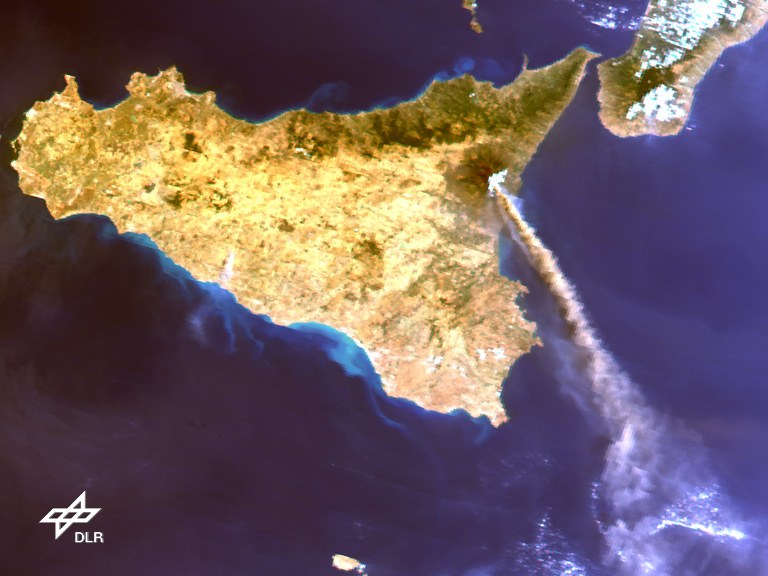Tenfold increase in sulphur dioxide concentration due to Etna eruptions
- ...Tenfold increase in sulphur dioxide concentration due to Etna eruptions
- Toxic sulphur dioxide cloud as large as the Federal Republic of Germany
- Scientists observe Etna intensively from space




...Cologne/Oberpfaffenhofen
The eruptions of Mount Etna have been monitored intensively from space for some time now. Scientists at the German Aerospace Centre (DLR) in Oberpfaffenhofen have been monitoring the environmental impact of the Etna eruptions since mid-July using various instruments (GOME, ATSR-2, SAR) on board the European Remote Sensing Satellite (ERS-2).
The latest analysis of satellite data obtained with the trace gas sensor GOME (Global Ozone Monitoring Experiment) shows that large areas are currently being polluted with up to ten times higher concentrations of sulphur dioxide (SO2). The affected area is currently located south-east of Sicily and, at around 350,000 square kilometres, has now almost reached the size of the Federal Republic of Germany.
The toxic sulphur compound, which is also partly responsible for acid rain, was hurled up to a height of three to five kilometres by the massive eruptions of Mount Etna. On 25 July, the affected area reached its largest extent to date, and the plume from Etna could be traced as far as the region south of Tobruk in northern Libya, around 1,000 kilometres away, due to the north-westerly winds that had been prevailing for days. The images clearly show the expansion and displacement of the affected area between 14 and 24 July.
The eruption can also be tracked with other sensors on board the ERS-2 satellite, which orbits the earth at an altitude of around 800 kilometres in a polar orbit. For example, the ATSR-2 sensor (Along Track Scanning Radiometer) clearly shows the extent of the plume, and the hot crater mouth of Mount Etna is visible in a night-time infrared image. The changes in the ground around Mount Etna caused by the lava flows are clearly detected by the Synthetic Aperture Radar (SAR) from space.
Information on the effects of sulphur dioxide can be found at the Federal Environment Agency.
